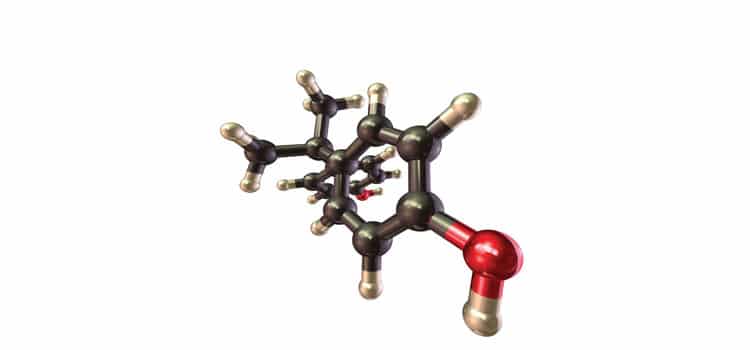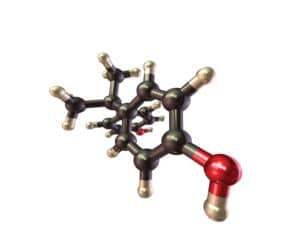
Benefits and Risks of Dental Sealants
While concern remains regarding the presence of bisphenol-A in some sealant materials, their success in preventing caries should remain top of mind.
Today, material-science innovations and discoveries can greatly impact the world we live in. One such material is bisphenol-A (BPA). It affects the work that oral professionals do every day because its derivatives often act as the glue-like ingredient in dental sealants and restorative materials.1
BPA is a chemical compound primarily utilized to produce polycarbonate plastic, which is used to make baby and water bottles, compact discs, medical devices, and epoxy resin, which is used as a lacquer for canned food, water supply pipes, and a component of dental sealants (Figure 1). The use of these products potentially exposes people to BPA.2 In sealant material, resin normally functions as a glue and the addition of BPA-derivatives create a durable and flexible material that is ideal for a protective tooth coating.
Composite resins are commonly known as BPA glycidyl dimethacrylate (bis-GMA), BPA dimethacrylate (bis-DMA), BPA diglycidy-lether (BADGE), BPA ethoxylate dimethacrylate (bis-EMA), and urethane-modified bis-GMA.3 Initially these derivatives are liquid monomers, but when light cured they become solid polymers.3 Bis-DMA and bis-GMA are most often used for flowable dental sealant material.4
SAFETY CONCERNS
There is a concern regarding the safety of BPA exposure and levels must be evaluated to ensure public health. The BPA compound is part of a group of xenobiotic chemicals that have estrogenic activity.5 In fetal and infant stages of mammals, including humans, estrogenic activity may cause adverse health effects.5 BPA is frequently described as an endocrine disruptor.6 In the mid-1990s, BPA was reported as a potentially toxic compound in dental materials and has since been a controversial topic.7 Especially during gestation, specific negative health effects of BPA exposure include some influence on the brain, (altered behavior, disrupted neurodevelopment), prostate glands (abnormalities of male genitalia), spontaneous abortion, preterm birth, low birth weight, and asthma.6,7

The raising of these concerns led to federal regulation and limitation of BPA use.7Most markedly, through a 2003-2004 National Health and Nutrition Examination Survey (NHANES) the United States Centers for Disease Control and Prevention discovered that 93% of Americans tested showed detectable levels of BPA.7Following the NHANES, the National Toxicology Program (NTP), a component of the National Institute of Environmental Health Sciences (NIEHS), evaluated research and reported only “negligible or minimal” concern for potential adverse health effects. In 2010, the US Food and Drug Administration stated that it shared the NTP’s low level of concern. In 2012, the Food Additive Regulation Committee was created to address public concerns and ban BPA use in baby bottles and sippy cups.7
BPA exposure occurs through the process of leaching, or a degradation of chemicals.5 For everyday polycarbonate materials, such as water bottles, leaching may occur via ultraviolet radiation exposure, autoclaving, microwaving, and other stressors.5 Dental sealants most often use bis-DMA and bis-GMA derivatives and not the full BPA compound. However, these derivatives and others found in dental resins may also undergo a leaching process.3,8
In 2015, Abouelleil et al3 found that bis-DMA may hydrolyze into BPA while in the mouth and that clinical skill and precision impacted the likelihood of BPA leaching. If left trapped in the composite restoration or sealant, uncured monomers may leach BPA into the mouth.4 Potential toxicities pass through via communication with pulp, surrounding tissues, and systemically.3 In contrast, overcuring may cause tissue or nerve damage.4 Oral health professionals’ skills and technique are key to safe and successful patient outcomes.4
Due to these concerns, alternative dental materials without BPA derivatives have been sought but selection is limited. The February 2017 issue of Dimensions of Dental Hygiene included a table containing products from 25 sealant manufacturers.9 Data on 37 sealant materials were organized by manufacturer, product name, monomer used, filled or unfilled characteristic, color, and unique features.9 Of those, 16% (six) were described as “BPA-free.” European composite resins were studied to ascertain the extent of BPA derivative use. The report included 23 manufacturers and 130 composite resins. Of those, 13% (17) used a monomer that was not derived from BPA, such as urethane dimethacrylate (UDMA) and triethylene glycol dimethacrylate (TEGDMA)6,10 Even these, UDMA and TEGDMA, along with bis-GMA, may exert cytotoxic and genotoxic effects through biodegradation.10
Overall, medical and dental procedures are not without risk. For example, radiographs are exposed with the “as low as reasonably achievable” principle because radiation exposure can be harmful. A need for radiographic information must be determined before exposure. In the same vein, patients at elevated caries risk will benefit from sealant application.
RESEARCH SHOWS LITTLE TO NO RISK
The New England Children’s Amalgam Trial provided dental care to 534 children ages 6 to 10 over 5 years. Psychosocial (eg, child behavior checklist) and neuropsychological (eg, intelligence quotient tests) evaluations were conducted, along with measured body mass index and fat percentage as related to intraoral presence of BPA.11 The surface years of dental sealants and preventive resin restorations were also tested. The 5-year follow up study found that the BPA exposure level of dental sealants and preventive resin restorations had no significant association with behavioral, neuropsychological, or physical development of the children.11
Another study measured BPA levels in the saliva of 30 volunteers immediately, 5 minutes, and 7 days after composite resin filling placement.12 BPA levels in the saliva were increased among those with a higher number of composite restorations. Over the course of 5 minutes, BPA levels were higher in saliva than before filling, but in 7 days the levels decreased.12 The European Food Safety Authority states that 50 micrograms per kilogram per day is the tolerable daily intake of BPA.12 Before the tooth was filled, 0.15 micrograms of BPA per liter were found on average in the saliva of study subjects; 5 minutes after filling, the level increased to 3.64 micrograms per liter; and at 7 days the level decreased to 0.59 micrograms per liter.12 The study concluded that composite resin filling is safe.12
The American Dental Association asserts that a 6-year-old is exposed to more BPA via food, air, thermal receipts, cosmetics, and other sources than through dental sealants. For a 6-year-old at 44 pounds, the US Environmental Protection Agency limit of BPA exposure is 1 million nanograms per day, and the European Food Safety Authority is 80,000 nanograms per day. Dental sealant BPA release is around 0.09 nanograms.13 The NIEHS and NTP have developed BPA initiatives to encourage BPA-focused research.2
BOTTOM LINE
Dental sealants are an important part of the caries prevention armamentarium. Their use reduces the risk of food and plaque accumulating in vulnerable pits and fissures, and generates a barrier of protection from decay-causing acids.14–16 Griffin et al17found that the successful application of sealants decreased caries risk by more than 70% for up to 5 years after placement. Caries continues to be the most common chronic disease of childhood and it exerts a variety of negative effects, from poor oral health to decreases in productivity for both school children and working parents/caregivers. The caries-prevention benefits of dental sealants must be carefully weighed against the little to no risk posed by BPA exposure due to sealant materials.
CONCLUSION
Practicing dental hygienists need to be knowledgeable about the risks of BPA so they can effectively explain the risks vs benefits for patients. An understanding of how the public perceives BPA, the functional role BPA plays in dental sealants, available alternative materials, results of current scientific studies, and the positions of leading dental health groups concerning BPA will equip oral health professionals for productive conversations with patients and their parents/caregivers.
REFERENCES
- Rathee M, Malik P, Singh J. Bisphenol a in dental sealants and its estrogen like effect. Indian J Endocrinol Metab. 2012;16:339–342.
- National Institute of Environmental Health Sciences. Bisphenol-A (BPA). Available at: niehs.nih.gov/health/topics/agents/sya-bpa/index.cfm. Accessed January 6, 2018.
- Abouelleil H, Attik N, Jeannin C, Colon P, Grosgogeat B. Potential toxicity of bisphenol a and other related substances in dental restorative resins. J Oral Sci Health. 2015;2:1–15.
- Azevedo S, Storz M, Francisco EM. Minimize BPA exposure. Dimensions of Dental Hygiene. 2013;11(10):25–28.
- Bittner GD, Yang CZ, Stoner MA. Estrogenic chemicals often leach from bpa-free plastic products that are replacements for bpa-containing polycarbonate products. Environ Health. 2014;13:41.
- Dursun E, Fron-Chabouis H, Attal J, Raskin A. Bisphenol-A release: survey of the composition of dental composite resins. Open Dent J. 2016;10:446-453.
- Lewis J. Bpa and dental materials. In: Eliades T, Eliades G, eds. Plastics in Dentistry and Estrogenicity. New York: Springer-Varlag Berlin Heidelberg; 2014:117–124.
- Maserejian NN, Trachtenberg FL, Wheaton OB, et al. Changes in urinary bisphenol a concentrations associated with placement of dental composite restorations in children and adolescents. J Am Dent Assoc. 2016;147:620–630.
- Focus on sealants. Dimensions of Dent Hygiene. 2017;15(2):32–35.
- Hsu WY, Wang VS, Lai CC, Tsai FJ. Simultaneous determination of components released from dental composite resins in human saliva by liquid chromatography/multi-stage ion trap mass spectrometry. Electrophoresis. 2012;33:719–725.
- Maserejian NN, Shrader P, Trachtenberg FL, Hauser R, Bellinger DC, Tavares M. Dental sealants and flowable composite restorations and psychosocial, neuropsychological, and physical development in children. Pediatr Dent. 2014;36:68–75.
- Lee JH, Yi SK, Kim JS, Son SA, Jeong SH, Kim JB. Salivary bisphenol a levels and their association with composite resin restoration. Chemosphere. 2017;172:46–51.
- Manchir M. BPA in dental sealants safe. American Dental Association News. Available at: ada.org/en/publications/ada-news/2016-archive/august/bpa-in-dental-sealants-safe. Accessed January 6, 2018.
- Crespin M, Gross-Panico M. Improving oral health with school-based sealant programs. Dimensions of Dental Hygiene. 2016;14(6):52–55.
- Hagel N, Vannah D. Seal away caries risk. Dimensions of Dental Hygiene. 2015;13(6):33–36.
- Godhane A, Ukey A, Tote JV, et al. Use of pit and fissure sealant in prevention of dental caries in pediatric dentistry and recent advancement: a review. Int J Dent Med Res. 2015;1:220.
- Griffin SO, Oong E, Kohn W, et al. The effectiveness of sealants in managing caries lesions. J Dent Res. 2008;87:166–174.
From Dimensions of Dental Hygiene. February 2018;16(2):21-23.


Why are we feeding our kids plastic when there are other options? How many children come back having ingested part or all of plastic sealants? BPA is not the only chemical in plastics. We’ve been using GI for over 10 years after having done thousands of plastic sealants…even on my own children. But now we know better.